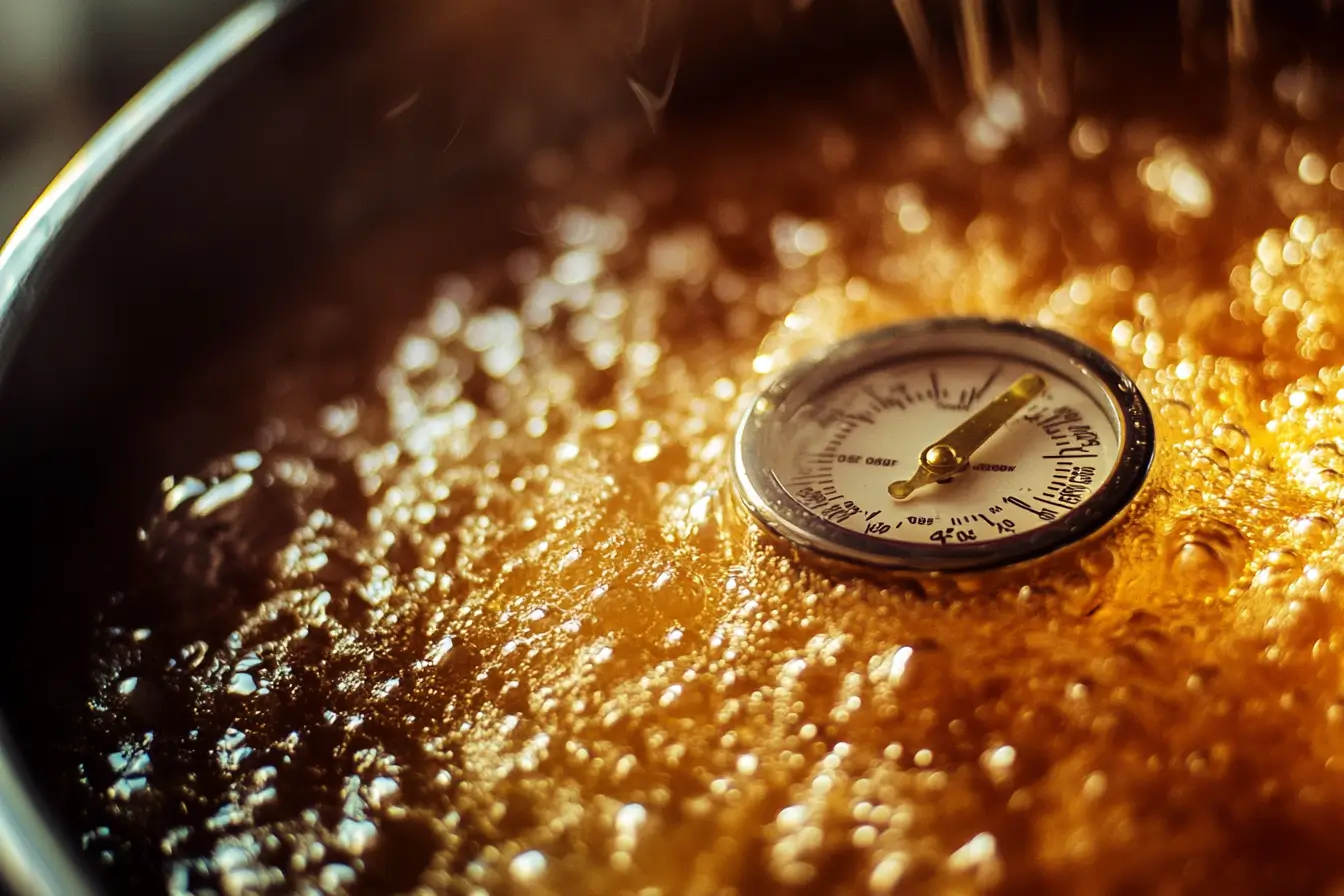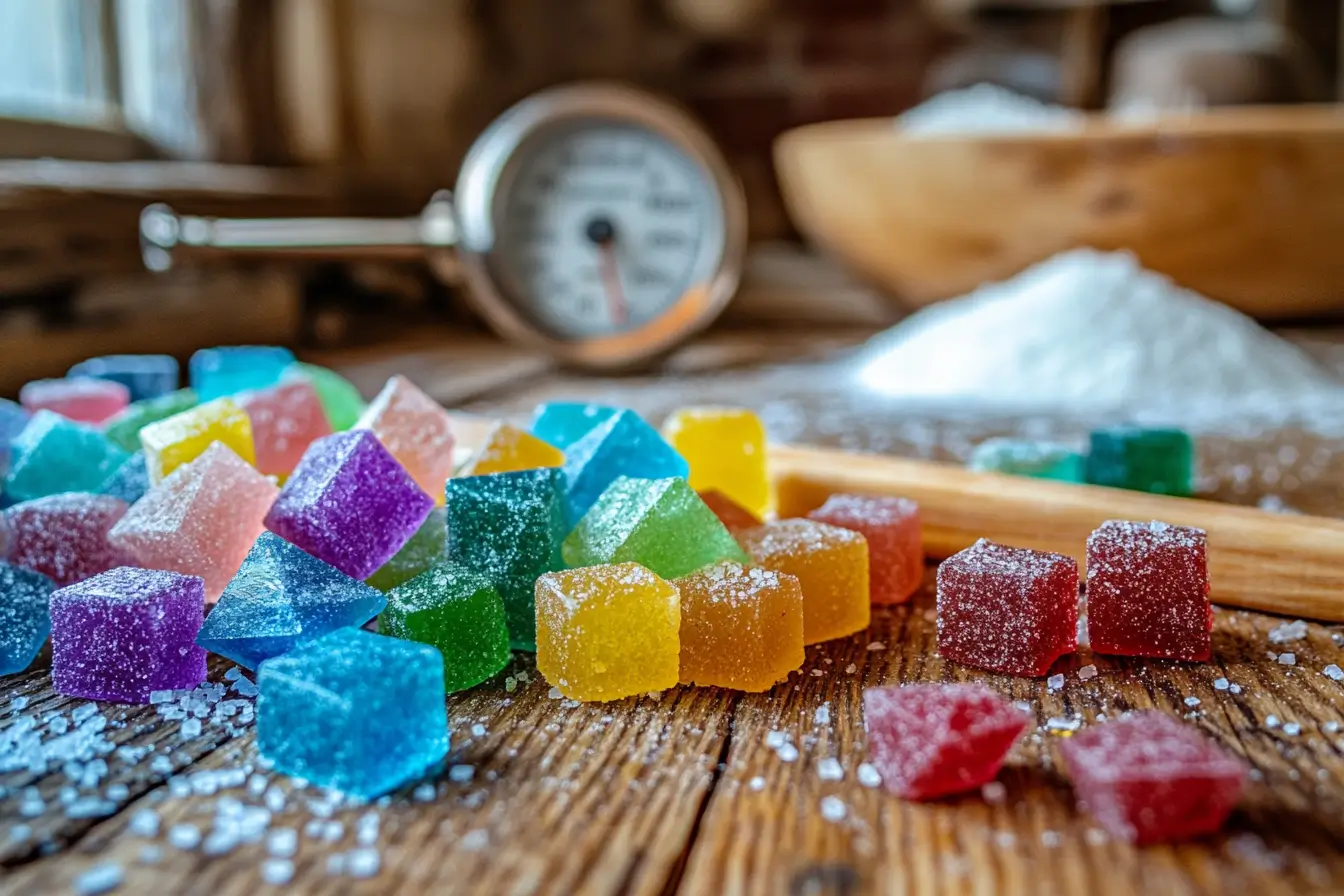Let’s face it, making hard candy at home can feel like a science experiment—because, well, it kind of is! If you’ve ever whipped up a batch of candy and ended up with a chewy texture instead of that satisfying crunch, you’re not alone. This happens to so many of us, and the reasons are usually tied to temperature, humidity, or even the recipe itself. Let’s dive into why this happens (and how to fix it) so you can nail your next batch.
What’s Hard Candy Supposed to Be Like?
Before we get into the nitty-gritty, let’s talk about what hard candy should be like. Think about classic lollipops, Jolly Ranchers, or candy canes. They’re smooth, shiny, and break with a snap—not a stretch. That’s because hard candy is essentially sugar cooked to a very high temperature to drive out moisture, leaving behind a solid, brittle texture.
If your candy is more like a sticky caramel or a taffy, something definitely went off track. But don’t worry! You’re not doomed to chewy candy forever.
Why Your Hard Candy Turned Chewy
1. Temperature Didn’t Get High Enough

This is probably the most common reason. To make hard candy, sugar needs to hit what’s called the “hard crack stage,” which happens at around 300°F to 310°F (149°C to 154°C). If you didn’t heat the sugar enough, you likely ended up in the “soft crack” range, which is around 270°F to 290°F. At that temperature, the sugar still has too much water left, making it soft and chewy instead of hard and brittle.
Fix it next time: Invest in a good candy thermometer. Honestly, it’s a game-changer! Clip it to the side of your pan, and watch it like a hawk as your sugar cooks.
2. Humidity Is Not Your Friend
Candy making and rainy days? Yeah, they don’t mix. Sugar is hygroscopic, which means it absorbs moisture from the air. If your kitchen is humid, even a perfectly cooked batch of candy can absorb water and turn sticky or chewy.
Fix it next time: Make candy on a dry day, or crank up the AC if it’s humid outside. You can also use a dehumidifier in your kitchen if candy-making is your thing.
3. Not Enough Time Cooking
Even if your thermometer says you hit 300°F, you might still run into problems if you don’t hold it there long enough. The sugar needs time to fully reach that hard-crack consistency, and rushing the process can leave you with chewy results.
Fix it next time: Be patient. Once your thermometer shows 300°F, let the sugar stay at that temperature for about 30 seconds to a minute before pulling it off the heat.
4. Too Much Corn Syrup
Corn syrup is a common ingredient in candy recipes because it prevents sugar from crystallizing (which is code for turning gritty and grainy). But too much of it can make your candy softer and chewier than you want.
Fix it next time: Stick to the recipe’s measurements. If you’re experimenting, start with small batches to find the right balance.
5. You Added Ingredients Too Soon
If you added flavorings, colorings, or other ingredients before the sugar reached the right temperature, that could also be the culprit. These extras can cool down the sugar mixture or mess with its chemistry, leaving you with a chewy texture.
Fix it next time: Wait until your sugar hits the hard-crack stage before adding anything. Once you pull it off the heat, you’ll have a brief window to mix in flavors and colors before it hardens.
6. Storage Issues
Even if you nailed the recipe, poor storage can ruin your candy. Remember what we said about sugar being hygroscopic? If you leave your candy out in the open, it can soak up moisture from the air and lose its crunch.
Fix it next time: Store your candy in an airtight container, preferably with a little packet of silica gel to absorb moisture. Keep it in a cool, dry place—not in the fridge.
How to Fix Chewy Hard Candy
If you’ve already made chewy candy, don’t toss it just yet! You might be able to salvage it:
- Reheat It: Place your candy back in a pot and slowly heat it until it reaches the hard-crack stage (300°F to 310°F).
- Use It Differently: Turn it into a caramel sauce by melting it down with a bit of cream or butter. Hey, it might not be what you planned, but it’s still delicious!
Common Reasons Your Cornflake Candy Is Hard
1. Overcooking the Syrup
Overheating sugar syrup can cause it to pass the ideal soft-ball or firm-ball stage, leading to a brittle texture. A thermometer is essential to prevent this issue.
- Solution: Aim for a temperature range of 240–245°F (soft-ball stage) for cornflake candy to achieve the right consistency. For other hard candy tips, check out this article on how long candy corn takes to harden.
2. Too Much Sugar
Adding too much sugar can make the candy excessively stiff.
- Solution: Stick to the recipe measurements and consider using marshmallows or other binders for flexibility.
3. Humidity Levels
Just like in other candy recipes, high humidity can make your cornflake candy behave unpredictably.
- Solution: Prepare candy on dry days or in air-conditioned environments for consistent results.
Tips for Perfect Hard Candy Every Time
- Use the Right Tools: A heavy-bottomed saucepan and a reliable candy thermometer are must-haves.
- Don’t Stir Too Much: Once the sugar dissolves, resist the urge to stir. Stirring can cause crystals to form, ruining the texture.
- Work Fast: Once the sugar hits the right temperature, it hardens quickly. Have everything (molds, flavorings, etc.) ready to go.
- Stick to the Recipe: Candy making is one of those things where precision really matters. Now’s not the time for eyeballing ingredients!
Can Using the Wrong Ingredients Make Hard Candy Chewy?
Absolutely! The type of sugar and other ingredients you use can play a big role in the final texture. Granulated white sugar is the standard for hard candy recipes because it melts evenly and reaches the proper consistency when heated. Substituting it with alternatives like brown sugar or raw sugar might leave you with chewy results because they contain molasses and more moisture.
Also, watch out for liquid sweeteners like agave or maple syrup. While they add interesting flavors, their water content can prevent the candy from hardening properly. Stick to the basics for foolproof results, and save the fancy sugars for baked goods or soft caramels.
Can High Altitudes Make Hard Candy Chewy?
Yes, and it’s not something many people think about! At higher altitudes, the boiling point of water is lower due to reduced air pressure. This means your sugar mixture might reach 300°F on your thermometer but still retain more moisture than it should. The result? Chewy candy, even when you think you did everything right.
If you’re making candy above 2,000 feet, you’ll need to adjust your target temperature. A general rule is to subtract about 2°F for every 1,000 feet above sea level. For example, at 5,000 feet, aim for 290°F to 300°F instead of the standard 300°F to 310°F.
Can Natural Food Coloring or Flavoring Cause Chewiness?
Yes, certain natural ingredients can mess with the candy’s chemistry. Water-based flavorings and food colorings are the usual culprits. They can dilute the sugar mixture and lower its temperature, making it harder for the candy to reach the hard-crack stage. This is especially true if you’re adding larger quantities to intensify color or flavor.
Instead, use concentrated options like gel food coloring or oil-based flavorings, which are designed for candy making. They provide the same pop of color and taste without introducing extra liquid.
Why Does My Hard Candy Get Chewy Over Time?
Even if your candy starts out perfectly crisp, it can soften and get chewy after a few days. This usually happens because of humidity or improper storage. As the candy sits out, it absorbs moisture from the air, especially in humid climates. This is why store-bought hard candies often come individually wrapped—they’re protected from the environment.
For homemade candy, wrap pieces individually in wax paper or cellophane, or store them in an airtight container with a desiccant packet. Keep the container in a cool, dry spot for the longest shelf life.
What About Sugar-Free Hard Candy?
If you’re experimenting with sugar-free recipes, you might find that achieving the perfect texture is a little trickier. Many sugar-free candies use sugar substitutes like xylitol or isomalt, which don’t behave exactly like regular sugar when heated. These ingredients require slightly different cooking techniques and may naturally produce a softer or chewier candy.
To get the best results, look for recipes specifically designed for sugar-free hard candy. These usually account for the unique properties of sugar substitutes and guide you to the right temperature range.
How Can I Test My Hard Candy Without a Thermometer?
If you don’t have a thermometer handy, the cold water test is your best friend. Here’s how to do it:
- Fill a bowl with ice-cold water.
- Drop a small amount of your boiling sugar mixture into the water.
- Wait a second, then scoop it out.
If it forms brittle threads that snap easily, congratulations—you’ve hit the hard-crack stage! If it bends or feels sticky, keep cooking and test again in a minute.
This method isn’t as precise as using a thermometer, but it’s a tried-and-true trick for candy makers who prefer the old-school approach.
FAQs About Making Hard Candy turn out chewy
Can I make hard candy without a thermometer?
A: Technically, yes. You can use the “cold water test” to check the sugar’s stage. Drop a bit of the syrup into a glass of cold water—if it forms brittle threads that snap when you bend them, you’re at the hard-crack stage. But honestly? A thermometer makes life way easier.
Why is my candy cloudy instead of clear?
A: Cloudiness is usually caused by stirring the sugar after it’s dissolved or by using a pan with uneven heat distribution. To get crystal-clear candy, let the sugar dissolve completely before boiling, and avoid stirring once it’s boiling.
Can I fix sticky candy after it’s done?
A: If the candy is sticky because of humidity, you can try placing it in a low oven (around 200°F) for 10–15 minutes to dry it out. Just keep an eye on it so it doesn’t melt!
Can I use honey instead of corn syrup?
A: Yes, but honey behaves differently than corn syrup. It can add a unique flavor, but it’s trickier to work with and might make your candy softer.
Final Thoughts About hard candy turn out chewy
If your hard candy turned out chewy, don’t stress. It’s all part of the learning process. Candy making takes a little practice (and maybe a bit of trial and error), but once you get the hang of it, you’ll be cranking out lollipops and butterscotch like a pro. Just remember to pay attention to the temperature, watch out for humidity, and keep experimenting—you’ll get there!
Now, go grab that sugar and show your kitchen who’s boss. Who knows? Your next batch could be the talk of the neighborhood. Or, you know, at least your family.


1 thought on “Why Did My Hard Candy Turn Out Chewy?”